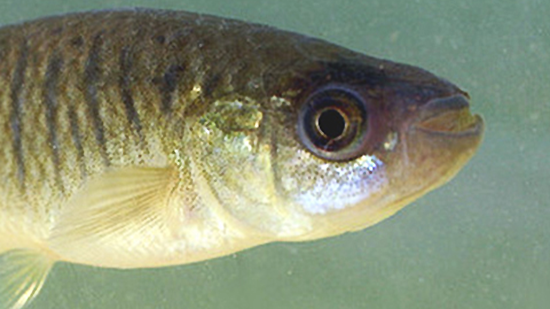In honor of Halloween, we’re counting down the five scariest critters in our waters.
1. Zombie Crab

Hans Hillewaert
The Chesapeake critter earning the title of creepiest of them all worthy of Halloween legend. Their tale is that of a body-snatching parasite, invading and taking control of the unsuspecting critter. The result? A mud crab turned zombie crab. Creepy!
When the small Loxo parasite invades the body of a mud crab, it establishes roots along the crab's tissues. The parasite inhabits the mud crab so entirely that soon it grows into a zombie crab, even raising the larval parasites in sacs on the crab's abdomen for future mud crab take overs!
The Loxo parasite is invasive in the Chesapeake region, and scientists believe it rode into local waters on the backs of Gulf oysters used to seed commercial reefs. Scientists are currently researching how exactly this parasite impacts the mud crab population and what can be done to keep the parasite from invading.
Get more of the story on these body snatchers from this Proptalk article.
2. Hellbender Salamander

Neil Ever Osborne/iLCP
The theory is that these creepy creatures were named by fishermen who thought the salamanders looked as though "they crawled out of hell and are bent on going back." Though their appearance has earned them such nicknames as "devil dog" and "snot otter," these slimy critters are harmless. They are not poisonous and have tiny teeth for consuming primarily crayfish. These largest salamanders in North America are nocturnal, spending most of their time under rocks and coming out at night to hunt.
The scariest thing of all is not the critters themselves—it is what has happened to their habitat. Because they breathe through their skin, they are extremely susceptible to pollution from coal mining and agriculture and have been dying off because of it.
Learn more about the hellbender.
3. Mummichog

NOAA
With a nickname like "Mummies," these Bay fish are practically made for fright. Though tiny—growing only to five or six inches—these critters are resilient. They can handle extreme changes to temperature, salinity, oxygen, and pollution levels. Their habitat often varies by season—in summer months they live close to the shoreline while and in winter they live in deep waters or buried in bottom mud. With their pointed teeth and long lower lip, they can eat up to 2,000 mosquito larvae in a day and have been used as a method of natural mosquito control. But don't be too afraid—these fish are so tiny that they are often used as live bait in sport fishing.
Learn more about the mummichog.
4. Bristle Worm

Hans Hillewaert
Worms may not seem so scary, but a worm covered in tiny, hair-like bristles? Terrifying. There are more than 110 different species of these benthic worms found in the mud flats, waters, and on the shores of the Bay and its tributaries, and they serve as a major part of the diet for many fish and other creatures in the ecosystem. Some of these species build tube habitats in the mud flats, while others move throughout the waters. Though their bodies break apart easily, they can regenerate lost parts.
And here's a frightening fact: These bottom-dwellers are particularly vulnerable to dead zones caused by excessive nutrient pollution from humans. Research estimates that up to a third of benthic creatures are killed each summer due to the low oxygen conditions.
Learn more about the bristle worm.
5. Snakehead

Will Parson/Chesapeake Bay Program
When this critter appeared in a Maryland pond in 2002 and later in the Potomac River, the reaction was worthy of a horror film. In fact, this "Frankenfish" even inspired a made-for-TV movie called "Snakehead Terror."
There's a lot to be afraid of when it comes to this critter's impact on the Chesapeake Bay region. Its insatiable appetite for fish, freshwater crustaceans, and amphibians mean it is fierce competition for sport fish like largemouth bass, and they reproduce quickly once introduced into a body of water.
Native to Asia, this invasive species can live out of water for up to four days thanks to an air bladder that functions much like a lung. So how can we keep this fish from invading even further? There is a plan in place to prevent and control the snakehead, and if you catch one in Maryland or Virginia, you are required to kill it. Perhaps the most exciting option though is eating these fish, and some believe strengthening the market for them is a great way to control their spread.
Learn more about the snakehead.


